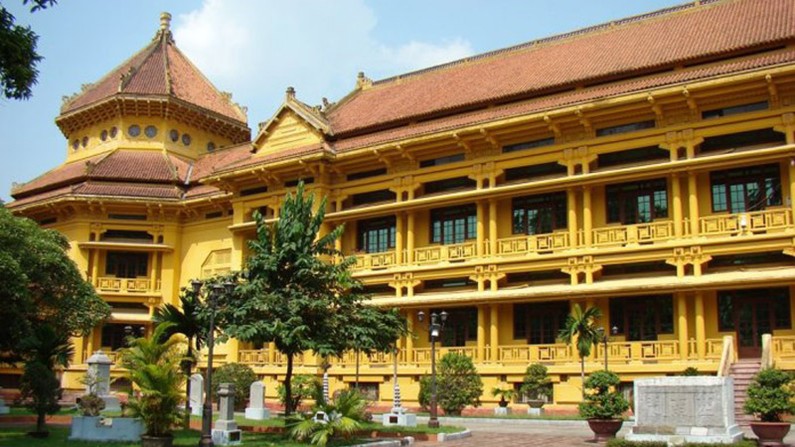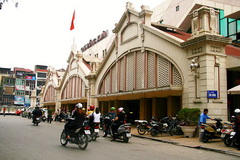




Viet Nam National Museum of History was founded on 26 September 2011 on the basis of merging Viet Nam History Museum and Revolution Museum.With 200,000 documents and artifacts displayed on an area of 4,000m², the museum includes two main exhibitions: the exhibition about Vietnamese history...

Le mausolée de Ho Chi Minh est situé sur la place Ba Dinh, à Hanoï au Viet Nam. Le mausolée a été construit pour accueillir la dépouille mortelle de Ho Chi Minh, fondateur de la République démocratique du Viêt Nam,...
.jpg)
Tay Tuu Flower VillageAddress: Tay Tuu Village, Tu Liem district, HanoiProducts: roses, daisies, liliesFollow the footsteps of Lady Dong Thi in the poem “An afternoon on West Lake” to Tay Tuu Village, long famous for its splendid flowers and uniquely Hanoi cultural beauty. In early...

Tran Quoc Pagoda was first erected with the name “Khai Quoc” (Opening a country) during King Ly Nam De Dynasty, between year 544 and 548 on the bark of Red River (approximately within Yen Phu Ward, Tay Ho District now). Till the 15th century, during King Le Thai Tong reign, it...

If you are touring along Tran Quang Khai road or Tong Dan street, chances are that you will be stopped out of curiosity and admiration by the unique French style architecture of Vietnam Museum of Revolution. Built in 1917 by the French colony, the place is now dedicated to displaying artifacts,...
.jpg)
Ba Vi National Park is centred on Mount Ba Vi, a mountain isolate situated about 50 km west of Hanoi. The mountain rises steeply out of a plain that rarely exceeds 30 m in elevation. In general, slopes on the western side of Ba Vi mountain, at an average of 25°, are steeper than those on the...
.jpg)
Village de "bánh chưng" Tranh KhucAdress: Village Thanh Khuc, Commune Duyen Ha, district de Thanh Tri, HanoïProduits: "Banh Chung" - gâteaux de riz gluant Le village de Tranh Khuc (commune de Duyên Ha, district de Thanh Tri,...
.jpg)
Quang Ba Flower VillageAddress: Quang Ba Village, Nhat Tan, Tu Liem district, HanoiProducts: daisies, dahlias, sunflowers, peaches and kumquat trees.In Lunar December, flower villages around Hanoi enter their peak season, as people buy potted plants to welcome the new spring. Quang Ba Flower...

Au cœur du vieux quartier, découvrez les centaines d'étals qui composent le plus grand marché de Hanoi. Le marché de Dong Xuan est le plus grand marché de Hanoi. Cet immense bâtiment, constitué d'une multitude de minuscules...
.jpg)
Quat Dong Embroidery VillageAddress: Quat Dong Village, Quat Dong commune, Thuong Tin district, Hanoi Products: Embroidered productsWhenever talking about Vietnamese traditional embroidery, people often mention to Quat Dong - ancestor of the embroidery with all the respect and pride. With...

Soyez le premier à connaître nos offres de voyage exclusives et les nouveaux circuits !.